HAN SELF-RIGHTEOUS RAGE IN XINJIANG
THREE of four blogposts on authoritarian China’s delusional fixation on predictive policing
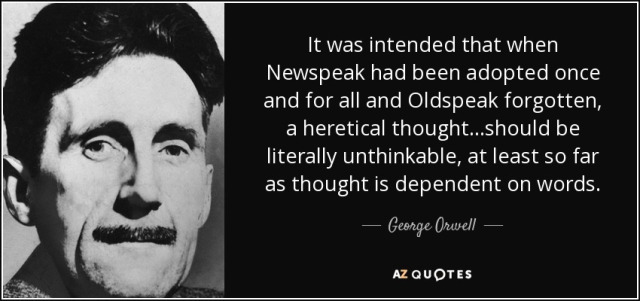
SPEAKING IN SLOGANS 24/7
Having identified the Tibetans and Uighurs as China’s eternal internal enemies, coercive correction ensues. In today’s wolf warrior China, it follows readily that what you do with enemies you cannot be rid of, you must and can coercively transform. This too is enormously labour-intensive.
Inside the concentration camps, the pressure to speak only in slogans is even more intense, and without cease. Even in the cell shared with other inmates, all speech must be those slogans, nothing else.
Endless repetition of slogans, over days, months and years, constitutes the success of re-education, and eventually “graduating” to release, though there have been few releases. Does the security state, established to institutionalise suspicion, actually believe that endless mouthing of performative declamation is actually a change of heart? Does anyone believe chanting gratitude to Xi Jinping for putting food into one’s mouth is done sincerely? Is this why detention is interminable? Does the security state want to believe its own propaganda? Is there any exit?
This drastic reduction of Uighur culture down to a single dimension – propensity for violence- inevitably robs Uighurs of a deep cultural heritage. A one-dimensional depiction of the Uighurs as classic Orientalist thuggee assassins who will without warning stab you to death, also robs the world of a culture that over many centuries contributed to the civilisations of inner Asia.[1]

Between the first Han immigrant wave into Xinjiang and the second, there was a revival of Uighur culture, and vigorous argument among Uighurs about what had been lost in complying with China’s exclusion of religion from the public sphere, which had led to devotional songs being reframed as love songs. This happened in Tibet too. Videos, DVDs and online postings of songs were acceptable to the censors if they presented as songs to the beloved, or to the beauty of the land, with a subtler subtext of devotion to the guru.

The Uighur cultural renaissance broadcasts of the 1980s “became ritualised events linking modern Uighurs with this poetic and musical canon of collective culture, variously described as an encyclopaedia Uighur culture, a ‘folk classical’ tradition, and a valuable part of world cultural heritage.”[2]
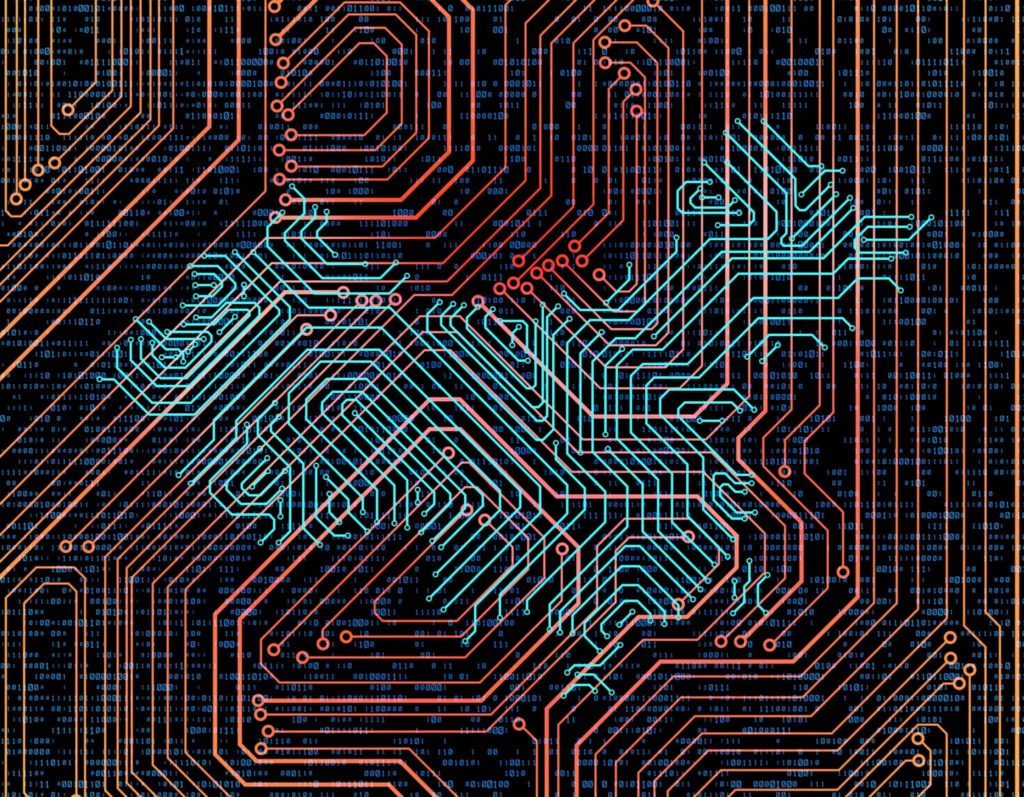
THE QUANTIFIABLE SELF, EAST AND WEST
The entire campaign to forcibly realign minds en masse depends on the algorithms of predictive policing. Algorithms by definition must be fed numbers, so emphasis is inevitably on what can be measured. Which Uighur men have beards? Which women cover their heads? These are ranked as key indicators of criminal dispositions in need of correction. Who prays?
These, and many other quantifiable attributes of self and identity, are no longer the numbers of the Quantified Self, as the data belongs to the state, for the primary purpose of instantly calculating criminal propensity. The Quantified Self (QS) was a promising proposition, that by wearing tracking devices, each of us will generate data so we will then be nudged to be fitter, get more exercise, become healthier, and avoid pandemic infections.
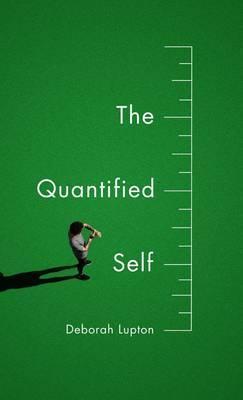
The state capture of the Quantifiable Self, not only for surveillance but also compulsory correction of deviant behaviours, is just one aspect of the parallel universes of American and Chinese corporate AI enthusiasms, which did not merge in ownership, due to prohibitions, both in China and the US, on corporate mergers and acquisitions. What did converge, however, was an increasing fusion, especially in China, between the oligopoly of corporate AI giants, and the party-state.
The fusion of state and corporate giants is most obvious in the ramping up of social credit systems, which blend data torrents of state surveillance and corporate tracking of consumer behaviours, preferences and desires, into a mimesis of the Quantified Self, who is to be rewarded or punished according to their ranking score. This hologram appears to be a whole human being, but is a statistical apparition, a ghost that walks into hypermodernity, to be incentivised, nudged, accoladed for obedience, or punished and even incarcerated, for praying, having a beard or headscarf. As usual, the advocates of social credit rankings seductively pitch their system as an enticing official recognition of compliance, a reward for paying your bills on time and having a good credit rating. Advocates of social credit rankings understandably dwell less on those to be punished, who will not be as keen to sign up; but such a system, in which everything is a one or a zero is inherently dualistic, requiring a negative pole, of deviants to be punished, to make the positive pole meaningful.
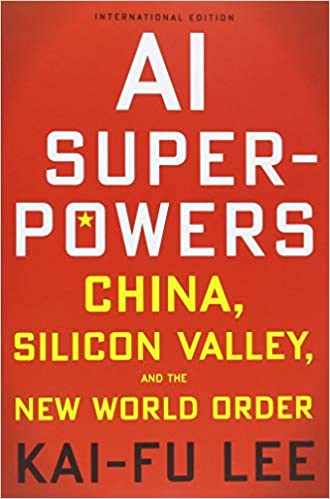
How the party-state fostered the AI corporates, in a conscious copying of Silicon Valley, is told by Kai-fu Lee, in his 2018 AI Superpowers: China, Silicon Valley and the New World Order, as a story in which he has a central role. In his chapter on “China’s Alternate Internet Universe” he introduces us to Guo Hong, an official tasked with generating a Beijing AI production base capable of imitating and then surpassing Silicon Valley, much faster. “Silicon valley’s ecosystem had taken shape over several decades. But what if we in China could speed up that process by brute-forcing the geographic proximity? We could pick out one street in Zhongguancun [in Beijing], clear out all the old inhabitants, and open up the street to key players.”[3]
As a senior party-state official, all Guo Hong needed to do was make a few phone calls, the old residents were evicted and “an alternate internet universe” was born. It is now renamed the Avenue of the Entrepreneurs. That’s how it goes.
This is socialism with Chinese characteristics, new era state capitalism. The distinction between data gathering for profit and data gathering to enforce assimilation has blurred. All data generated by quantified selves, voluntarily or involuntarily, is fed into the algorithms of reward and punishment, for marketing products, generating corporate revenue and for predictive policing. There are no clear boundaries separating the gathering, assembly and algorithmic rating of each citizen for consumption or correction purposes.
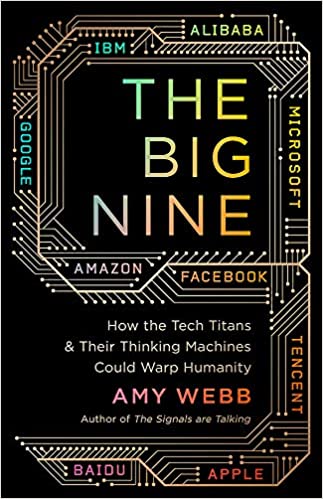
CORPORATE TRACKING, STATE TRACKING: IS THERE A DIFFERENCE?
In the West, it is supposed to be different. Maybe.
In the West the corporates who vacuum up the data from each Quantified Self keep it out of the hands of the security state. Maybe.
In China the conflation of enterprise and party-state in not the only collapse of categories. Big data started out by promising to lighten the bureaucratic load of police personnel laboriously entering information on criminals suspected, arrested, interrogated, tried and convicted. This simple automation of drudgery quickly morphed into a panopticon of surveillance, armed with facial recognition cameras everywhere and Quantified Self software to instantly allocate identities to each image. From there it was a short step to predictive policing. The hubris of AI start-ups was boundless, and the eagerness of the party-state for omniscience and omnipotence was insatiable. It was a match. Not for the first time, China’s century old worship of Mr. Science led it astray.
The other driver of predictive policing, coercive assimilation and now cultural genocide is Han racism. The aura of algorithmic scientific objectivity conceals the racism embedded in the assessments it generates. Algorithmic racism is by now well recognised around the world, among the many ways algorithms perpetuate and exacerbate inequality.[4] This is not hard to see. Algorithms are full of valuations and judgements which, once set are then invisible, and assume the mantle of fact. From the outset, in the insurance industry’s actuarial calculations of risk, algorithms have been fixated on identifying and quantifying risk. That’s core business. Assigning a risk weighting to beards and headscarves is just the start.
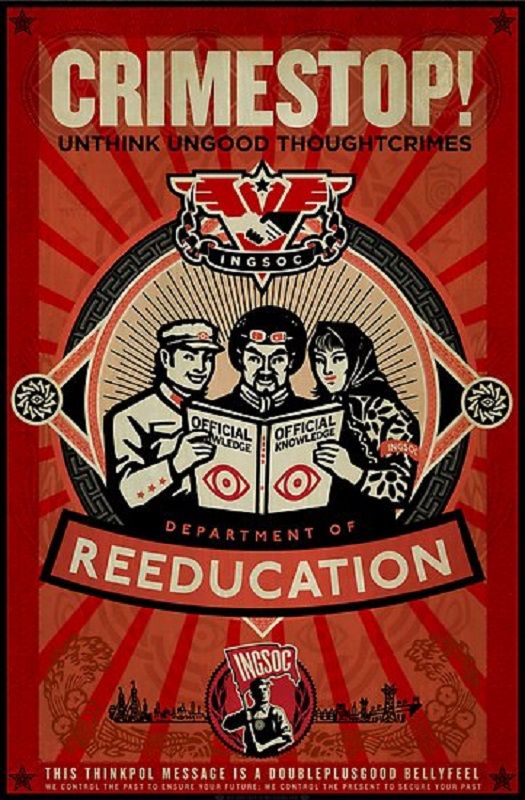
The naturalisation of forcible assimilation driven by algorithmic assessment is further reinforced by likening it to medical treatment of disease: “In April 2017, the Khotän Prefecture government published a bilingual Chinese-Uyghur document, ‘Transformation through Education Classes Are Like a Free Hospital Treatment for the Masses with Sick Thinking’ (2017). The document begins by stating:
“In the recent period…a small number of…especially young people have been sent to transformation through education classes to receive study; many parents, relatives and the general population do not understand transformation through education classes and may have some misgivings.
“The document then promises to dispel these misgivings by extolling the benefits of ‘transformation through education’ as a free ‘treatment’, effectively equating religiosity with a dangerous drug addiction. According to this logic, replacing religious beliefs with ‘correct’ state ideology through re-education is akin to a detoxification process that is freely provided by a benevolent state. In other contexts, the state equates the battle against religious ‘extremism’ with ‘eradicating the tumours’”.[5]
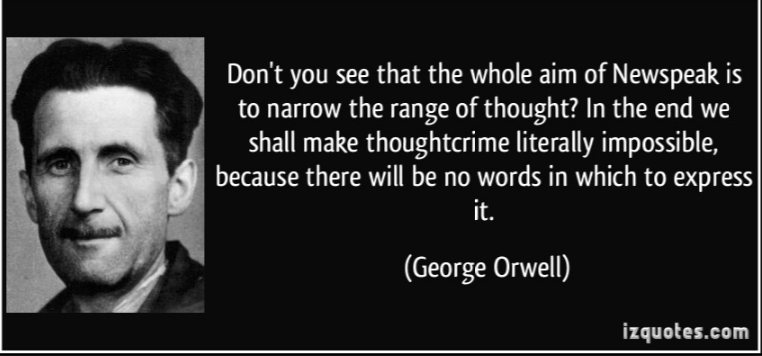
HOW TO BECOME UNTRUSTWORTHY
A detailed list of the official categories embedded in the algorithms of mass detention is a jumble of racist prejudices:
- Breaking family planning laws
- Travelling to one of 26 ‘sensitive’ countries
- Being involved in the 2009 protests in the city of Urumqi
- Going on a hajj pilgrimage
- Being related to someone who is detained
- Being an ‘untrustworthy’ individual
- Providing a place for ‘illegal’ worship
- Secretly taking religious texts from the mosque to pray at home
- Owning a passport
- Growing a beard
- Being a ‘wild’ (unofficial) Imam
- Using a virtual private network — software that allows access to websites banned by China
- Owning ‘illegal’ books
- Getting married using a fake marriage certificate
- Reading scripture to a child aged under 16
- Visiting a banned website
- Donating money to a mosque
- Disobeying local officials
- Praying in a public place
- Calling someone overseas
- Having previously served time in prison
- Downloading violent videos[6]
These categories of criminality drive the algorithmic allocation of guilt.
This jumbled list of what justifies official hostility is a mishmash of classic Han prejudices. Those prejudices are not at all new, but their systematisation is, as is the insistence that these are objective markers of Uighur anti-social tendencies in urgent need of correction.
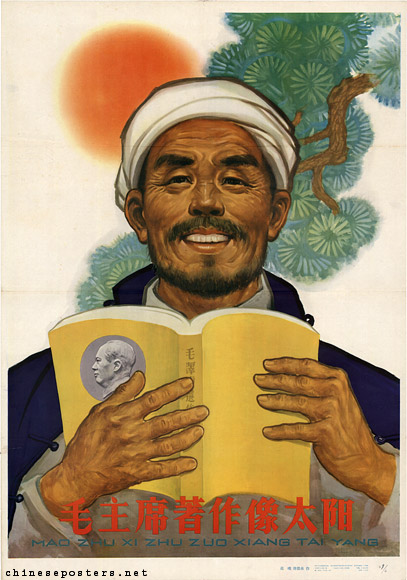
What justifies urgent rectification is the violence, especially in 2009 and 2014, against Han hegemony over a nominally autonomous Uighur region. Official propaganda videos on this “extremist terrorism” have whipped up widespread Han anger and a wolf warrior will to punish not only the guilty but those who might dare to think about it.[7]
However, Uighur unhappiness at colonisation is not new. In 1956 “some backward masses” rose against XPCC bingtuan Han “killing and wounding scores of our cadres, comrades and soldiers”.[8] Further uprisings occurred in 1958 and 1959. In one, 10,000 young Uighur men stormed a prison, releasing 600 prisoners, and seizing grain stocks as famine loomed.[9] Only the overwhelming firepower of the military quelled the masses.
Official policy remained conflicted and contradictory. Not only were the rights of minority nationalities to be respected, officially there were calls “in particular to rectify the tendency towards ‘great nationalism’ prevalent among the Han cadres.”[10] As elsewhere in China, this equivalence of great Han chauvinism and small minority chauvinism gave way to a revolutionary zeal to sweep away everything old. Han chauvinism was no longer spoken of. In the name of revolution Han racist prejudices triumphed.
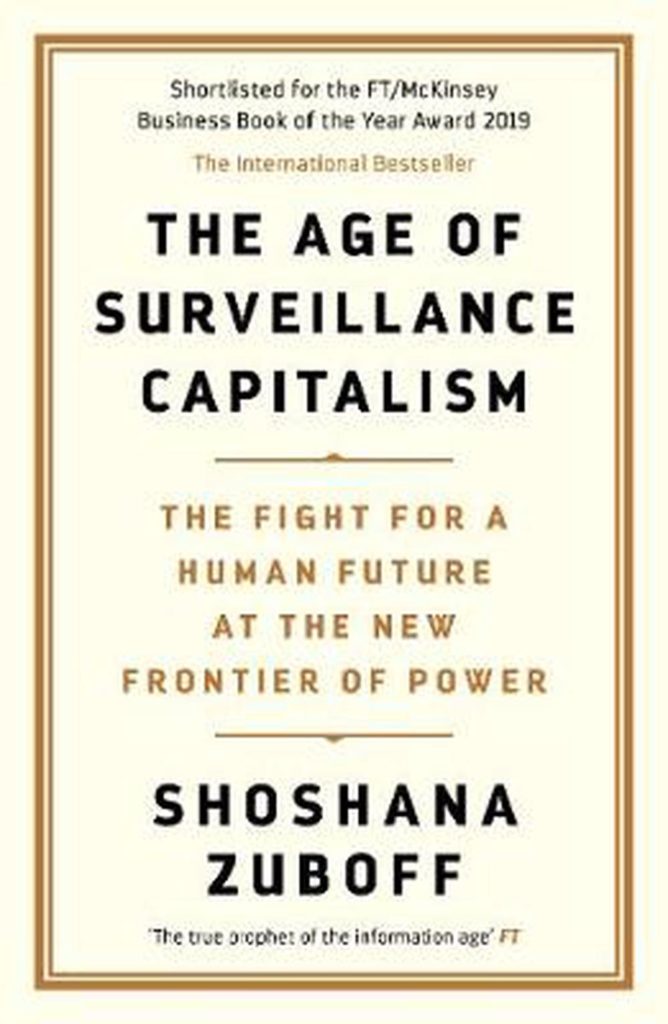
SURVEILLANCE STATES, CAPITALIST AND SOCIALIST
How did we get to the calculated cruelty of predictive policing and the incarceration of a million or more people suspected, by algorithmic formula, of criminal intent?
In the West, where surveillance capitalism still seems to many to be separate from the surveillance state, it all started well. Shoshana Zuboff tells us: “from the very start Google’s breakthrough depended upon a one-way mirror: surveillance. The new methods were invented and deployed from 2001 to 2004 and held in strict secrecy. This shift in the use of surplus behavioural data was a historic turning point. Google had found a game-changing, zero-cost asset that could be diverted from service improvement towards a genuine commercial exchange. Surveillance capitalism soon migrated to Facebook and rose to become the default model for capital accumulation in Silicon Valley, embraced by every start-up and app. It was rationalised as a quid pro quo for free services but is no more limited to that context than mass production was limited to the fabrication of the Model T. It has long been understood that capitalism evolves by claiming things that exist outside of the market dynamic and turning them into market commodities for sale and purchase. Surveillance capitalism extends this pattern by declaring private human experience as free raw material that can be computed and fashioned into behavioural predictions for production and exchange. In this logic, surveillance capitalism poaches our behaviour for surplus and leaves behind all the meaning lodged in our bodies, our brains and our beating hearts. You are not “the product” but rather the abandoned carcass. The “product” derives from the surplus data ripped from your life.
“At a certain point, surveillance capitalists discovered behaviour modification: digitally mediated real-time interventions that nudge consumers in the direction of desirable outcomes. As one data scientist explained to me: “We can engineer the context around a particular behaviour and force change that way . . . We are learning how to write the music, and then we let the music make them dance.”
“Surveillance capitalists produce deeply anti-democratic asymmetries of knowledge and the power that accrues to knowledge. They know everything about us, while their operations are designed to be unknowable to us. They predict our futures and configure our behaviour, but for the sake of others’ goals and financial gain. This power to know and modify human behaviour is unprecedented.”[11]
From there, it is a short step to predictive policing in a developmentalist state that has long picked corporate winners, subsidising its favoured enterprises, using technologies invented for profit to punish enemies of the state. Whether the customer is nudged to buy, or the Uighur on the street is rounded up by police, the big data gathering is the same, and the algorithms are the same.
For an advertiser, Google promises to sell you its selection of people who have an active interest in your product. If you are a manufacturer of barbeques, for example, targeting your advertising direct to a curated list of people who have used the word “barbeque” in a Google search, that looks like a much better bet than the scattergun of advertising to millions in a general interest mass medium. Even if only a handful of the thousands Google has curated just for you ever actually buy your barbeque, it is still a winning proposition compared to mass advertising. If you sell a dozen, you’re laughing.
But if you are a security state seeking to identify, in a population of 12 million Uighurs, the few with actual violent intent, does monitoring of beards and prayers deliver the target? Or are the measurables of facial recognition software, such as beards and head scarves, delivering a huge number of people, only a few of whom intend violence? Is it wise to aggressively indoctrinate a thousand because one in a thousand is likely to become violent?

DELUSIONS OF CONTROL
Radical uncertainty is the human condition. Anything can happen. What is normal can collapse, almost as if it had never been. The past is no guide to the future. The compulsion to calculate risks that may arise is delusional. Not only do the Buddhist lamas tell us so, so too does the Governor of the Bank of England, Mervyn King, in his 2020 reflection on what he learned in a decade of running the British economy, in Radical Uncertainty.[12]
Central banks and core institutions of globalisation such as the International Monetary Fund are expected to foresee major crises, such as an economic recession or financial crisis. Identifying trends and assessing risks are core business, in a world increasingly fixated on anticipating and controlling risks. A quantification of IMF risk assessments, 1988 to 2018, finds there had been 469 recessions, 79 of them in advanced economies. The IMF foresaw only four a year in advance, and none when it came to rich nations. It did, however, spot 47 that never happened.
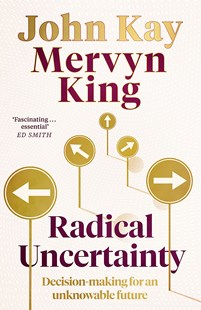
Mervyn King tells us why “future-proofing”, the delusion driving predictive policing, is delusional. We seek certainties that don’t exist and invent knowledge that we can’t have to support our decision-making. Yet the economics profession has become dominated by an approach to uncertainty that requires a comprehensive list of possible outcomes with well-defined numerical probabilities attached to them. Drawing widely on philosophy, anthropology, economics, cognitive science, strategic management and organisation scholarship, King and co-author John Kay present an argument that probabilistic thinking gives us a false understanding of our power to make predictions.
To be reminded of this, in the midst of a global pandemic no-one foresaw, is helpful. But this is hardly a new insight. Not only have the Buddhist teachers been telling us for over 2500 years that everything is contingent, interdependent and unreliable, it is 99 years since Keynes reminded us. In 1921 Keynes depicted the ubiquity of “radical uncertainty”, based on the premise that we do not know what is going to happen, and we have a very limited ability to even describe the things that might happen.[13] Keynes said: “By uncertain knowledge, I do not mean merely to distinguish what is known for certain from what is only probable. The sense in which I am using the term is that in which the prospect of a European war is uncertain . . . There is no scientific basis to form any calculable probability whatever. We simply do not know.” When Keynes wrote that in 1921 it was just three years since “the war to end all wars”, and no-one could imagine that 18 years later Germany would insist on refighting it.
Nonetheless the Chinese Communist Party remains addicted to data, calculations, models, extrapolations, forecasts and predictive policing. It is not alone. The hunger for certainty, predictability, reliably controlled risks is so strong. Investors, corporate bosses, think tanks, management consultants, as well as governments all want the future to be chartable and manageable. Milton Friedman, high priest of neoliberalism, disagreed with Keynes, insisting “We may treat people as if they assigned numerical probabilities to every conceivable event.”
This is seductive, and the advent of big data made it all the more seductively tantalisingly close: the chimera of mastery of not only the present but also the future.
In order to make the future predictable, Friedman had to reduce human complexity to a thin simulacrum, homo economicus, who is forever objectively calculating the shifting odds, as if that is what real people do, all the time. This highly reductive version of human nature is now thoroughly discredited by behavioural economics, which reminds us that human motivations, expectations, hopes, fears, prejudices and assumptions all affect our attempts at peering into the future.
China’s party-state remains addicted to the illusion of control, blind to the racist prejudices embedded in the predictive policing classification criteria. This is not just because China has not caught up with the shift in economic thought, it is because the CCP’s legitimacy relies on its supposed capacity to foresee emerging problems and apply the right solutions. The CCP is a problem-generating engine, manufacturing “contradictions” which it alone is qualified to resolve. That is its mode of existence.

CHINA’S INCLUSIVE/EXCLUSIVE RACISM
While the CCP casts its baleful gaze outwards onto the Uighurs, it is averse to gazing inward, to notice its deep prejudices, that pervade its predictive policing. In China, racism is frequently blamed as the driver of Western efforts to decouple the global economy, and name China a bad actor for stealing intellectual property and competing unfairly by favouring its Chinese national champions. China is quick to name racism as endemic in the West, and occasionally is willing to look at popular attitudes towards Africans resident in China as racist. That is as far as it goes.
China has global ambitions, aided by classifying anyone, anywhere worldwide, who is of Chinese descent, as Chinese. This is a deterritorialised Chineseness that transcends boundaries and claims people as Chinese whether they see themselves that way or not. In Chinese there is little distinction between:
- 中国人 (zhōngguó rén), meaning someone from the country China;
- 华侨 (huá qiáo), a politically laden term meaning ‘overseas Chinese’, implying sojourner status;
- and 华人 (huá rén), meaning ‘Chinese (ethnic) person’,
- or 华裔 (huá yì), meaning ‘of Chinese ethnicity’.
This ‘华’ (huá) is a shortened version of ‘中华’ (zhōnghuá), which can be found in the official name of the People’s Republic of China—中华人民共和国 (zhōnghuá rénmín gònghéguó)—as well as that of the Republic of China—中华民国 (zhōnghuá mínguó). To use a Germanic word, 中华 refers to the Volk. As Chinese populations expand worldwide, with Chinese workforces building Chinese loan-financed infrastructure, “strategies and policies implemented by the Chinese government and its overseas representatives aiming at engaging Chinese diasporas also contribute to spreading nationalism and building a deterritorial Chinese identity.”[14]
Within China, territorially defined, it is axiomatic that all minority nationalities will inevitably merge into the volk, the Han race-nation, the 中华’ zhōnghuá. From a standard Han perspective, the history of China is the assimilation of minorities, even those who conquered and ruled China, including the Mongols and Manchu. Chinese civilisation is so self-evidently superior, magnetic, compellingly attractive, it is a historic inevitability that all under heaven will be drawn to it, and adopt it as their identity. Of the 56 officially recognised ethnicities, only two stubbornly resist: the Uighurs and the Tibetans. Their resistance is proof of their backwardness, primitivity and refusal of modernity. Yet modernity is simply a universal law of development. All of this is so obvious to nearly all Han it seldom needs to be said.

[1] Nathan Light, Slippery Paths: performance and canonisation of Turkic literature and Uygur Muqam song in Islam and modernity, PhD, Indiana, 1998
[2] Nathan Light, Cultural Politics and the Pragmatics of Resistance, in Ildiko Beller-Hann ed., Situating the Uyghurs between China and Central Asia, 2008, 156
[3] Kai-fu Lee, Mariner Books, 2018, 53
[4] Lily Hu and Yiling Chen. 2018. A Short-term Intervention for Long-term Fairness in the Labour Market. In WWW 2018: The 2018 Web Conference, April 23–27, 2018, Lyon, France. ACM, New York, NY, https://doi.org/10.1145/3178876.3186044
[5] Zenz (2019) ‘Thoroughly reforming them towards a healthy heart attitude’
[6] Christian Shepherd and Laura Pitel , The Karakax list: how China targets Uighurs in Xinjiang, FT 17 Feb 2020, https://www.ft.com/content/e0224416-4e77-11ea-95a0-43d18ec715f5
The Karakax List: Dissecting the Anatomy of Beijing’s Internment Drive in Xinjiang, Journal of Political Risk Feb 2020 https://www.jpolrisk.com/karakax/?utm
[7] https://www.youtube.com/watch?v=fuj5yUNW7rg
[8] Xinjiang Daily, 23 September 1956, cited in Don McMillen, Chinese Communist Power and Policy in Xinjiang, 1949-1977, Westview Press 1979, 117
[9] McMillen, 119
[10] Report of the Central People’s Government Mission to Northwest China, Xinhua, 22 March 1951, cited in McMillen, 114
[11] Shoshana Zuboff: Facebook, Google and a dark age of surveillance capitalism, Financial Times, 25 Jan 2019
[12] John Kay and Mervyn King, Radical Uncertainty: Decision-making for an unknowable future, Little, Brown, 2020
Nassim Taleb, (2007) The Black Swan: The Impact of The Highly Improbable. Random House, London
Philip E. Tetlock, Superforecasting: The Art and Science of Prediction, Broadway Books,
[13] John Maynard Keynes, 1921, A treatise on probability. Macmillan, London
[14] Jinpu Wang & Ning Zhan (2019) Nationalism, overseas Chinese state and the construction of ‘Chineseness’ among Chinese migrant entrepreneurs in Ghana, Asian Ethnicity, 20:1, 8-29, DOI:10.1080/14631369.2018.1547875